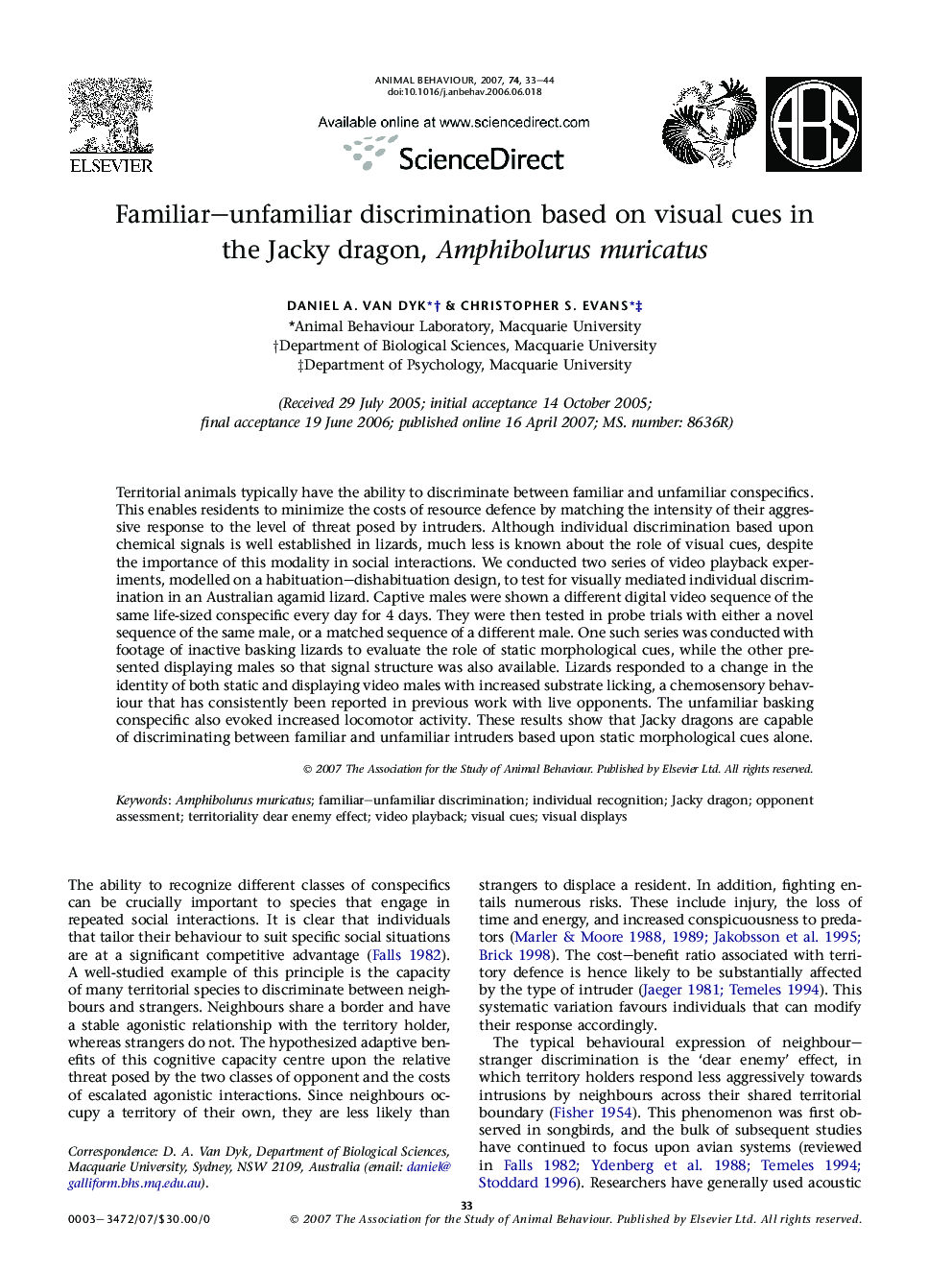| کد مقاله | کد نشریه | سال انتشار | مقاله انگلیسی | نسخه تمام متن |
|---|---|---|---|---|
| 2418434 | 1104346 | 2007 | 12 صفحه PDF | دانلود رایگان |

Territorial animals typically have the ability to discriminate between familiar and unfamiliar conspecifics. This enables residents to minimize the costs of resource defence by matching the intensity of their aggressive response to the level of threat posed by intruders. Although individual discrimination based upon chemical signals is well established in lizards, much less is known about the role of visual cues, despite the importance of this modality in social interactions. We conducted two series of video playback experiments, modelled on a habituation–dishabituation design, to test for visually mediated individual discrimination in an Australian agamid lizard. Captive males were shown a different digital video sequence of the same life-sized conspecific every day for 4 days. They were then tested in probe trials with either a novel sequence of the same male, or a matched sequence of a different male. One such series was conducted with footage of inactive basking lizards to evaluate the role of static morphological cues, while the other presented displaying males so that signal structure was also available. Lizards responded to a change in the identity of both static and displaying video males with increased substrate licking, a chemosensory behaviour that has consistently been reported in previous work with live opponents. The unfamiliar basking conspecific also evoked increased locomotor activity. These results show that Jacky dragons are capable of discriminating between familiar and unfamiliar intruders based upon static morphological cues alone.
Journal: Animal Behaviour - Volume 74, Issue 1, July 2007, Pages 33–44